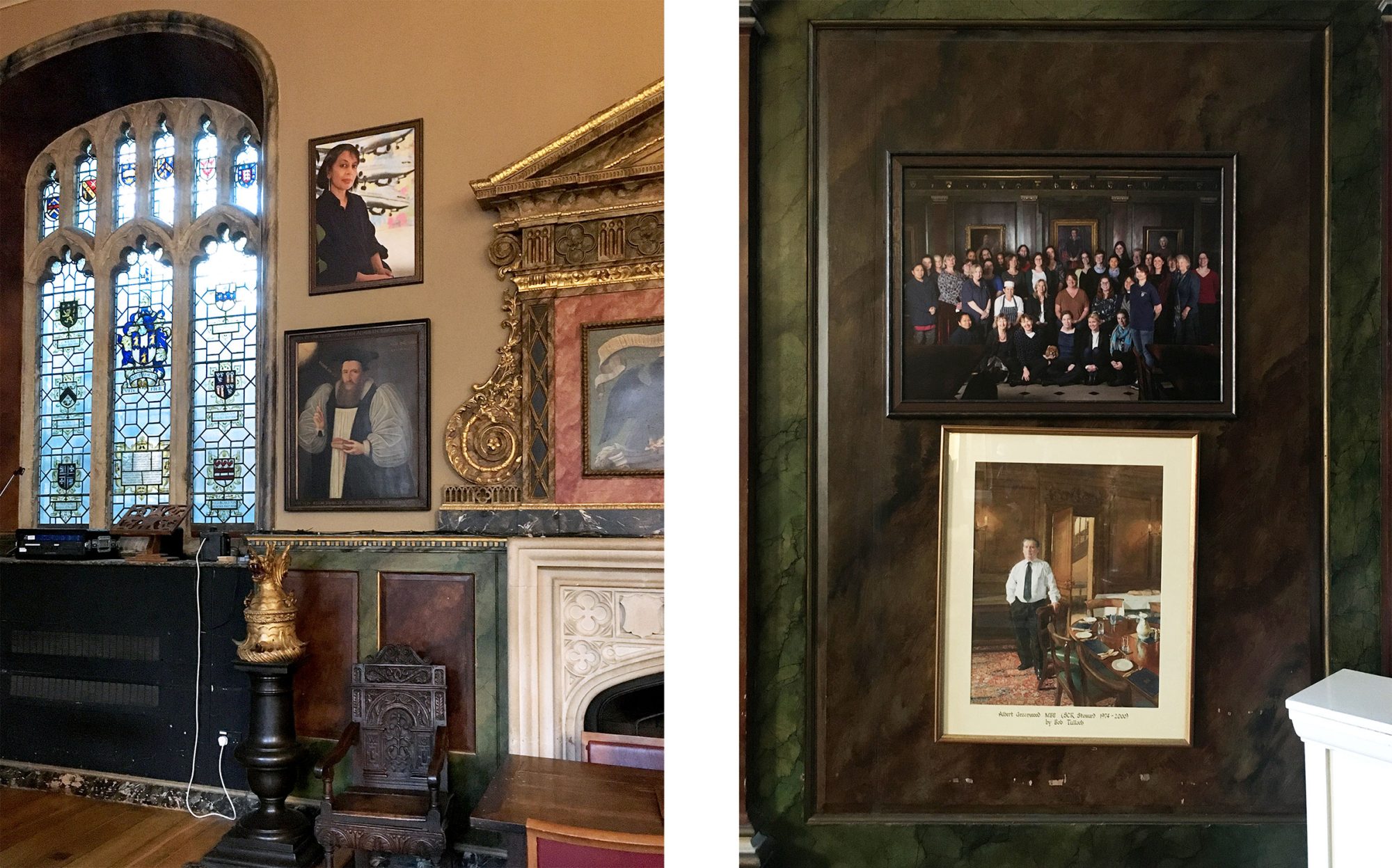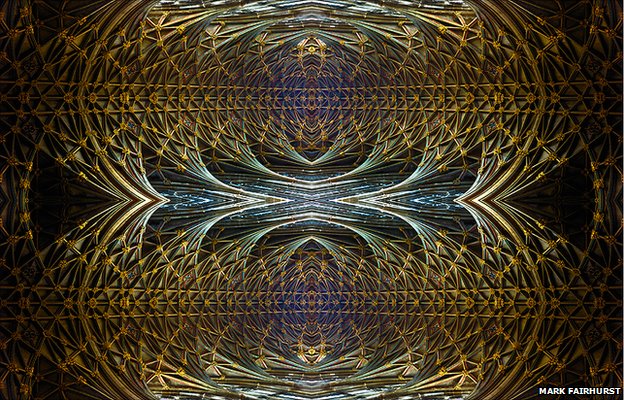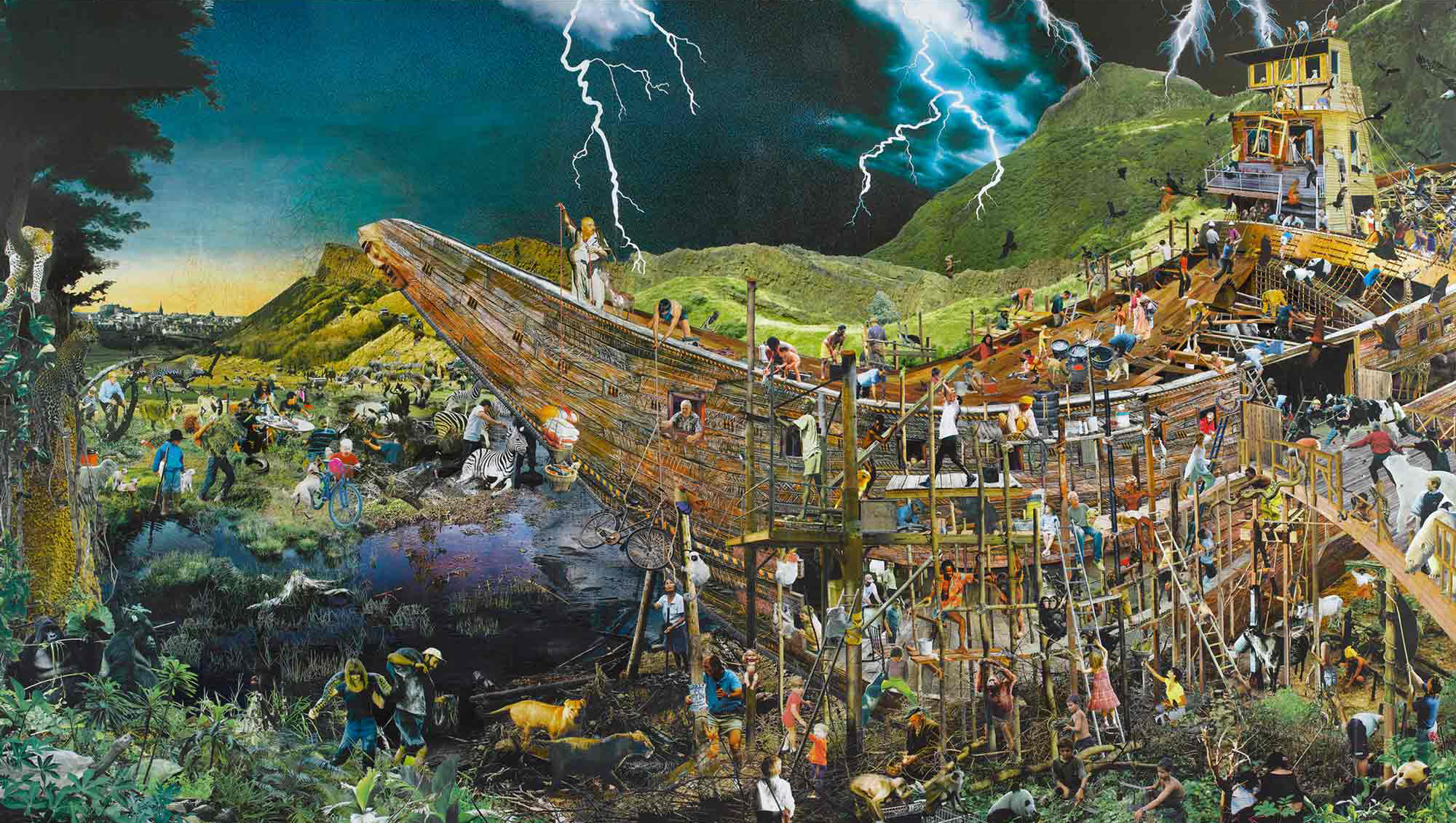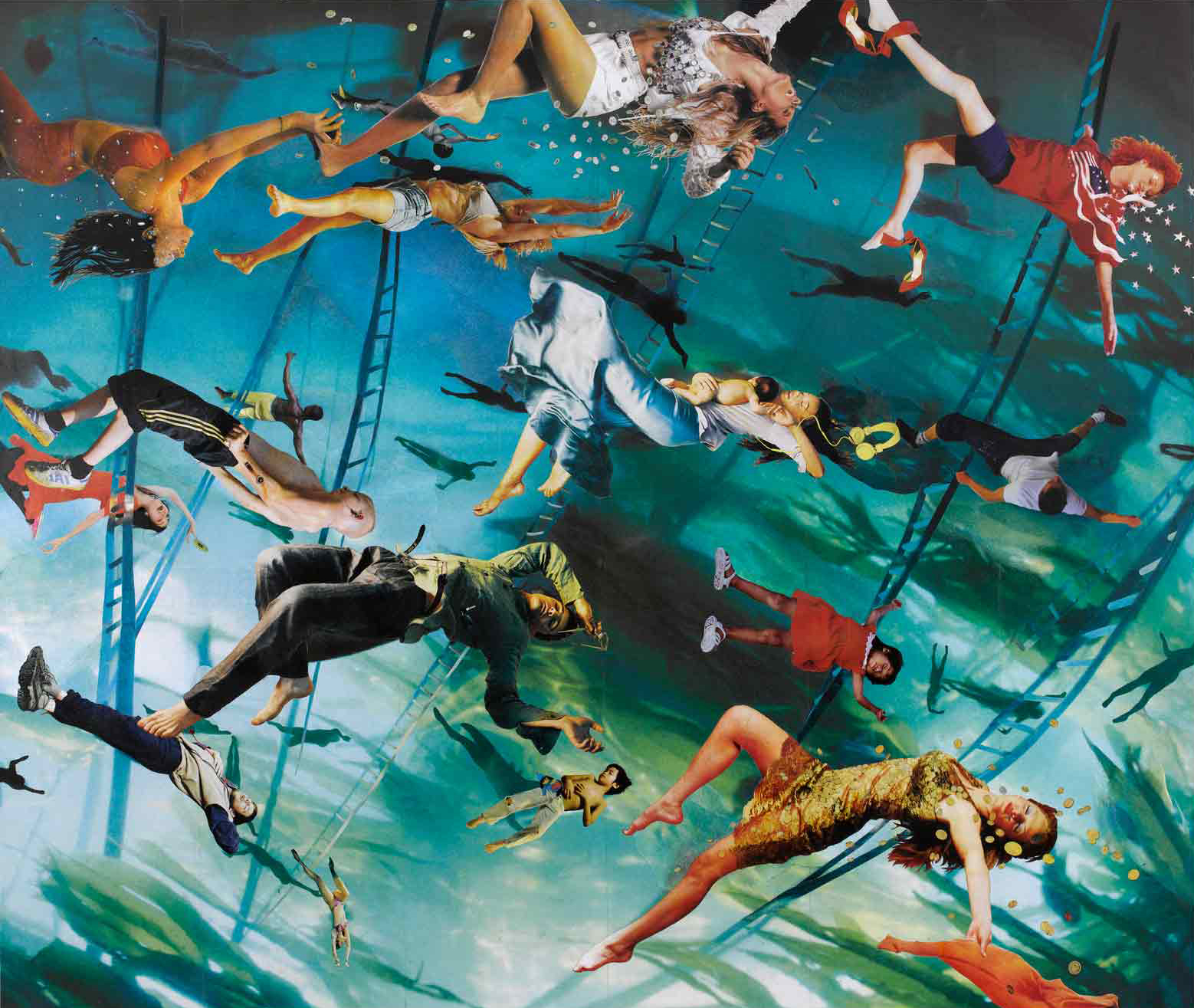Sometimes conversations with photography coalesce in a place: an exhibition here, a commission there, a publication to seal the moment. For me, this has recently happened in Oxford. Earlier this year, I was invited to speak at the seminar series for the Bible in Art, Music, and Literature hosted by Trinity College; and last month I visited some of the venues taking part in the Photo Oxford Festival. At the former, I came across the work of photographer Robert Taylor, whose series Feminae Trinitatis was displayed in the Dining Hall at Trinity. This work, and the theme of Photo Oxford this year, centred on women: women as sitters, as photographers, as curators, and as leaders in their field. I’ll try and distill what I think coalesced here, something that goes beyond a passing thematic interest, and puts feminism on the map with its sense of place.
In the online conference for the Festival (24th October), ‘Let Us Now Praise Famous Women’, a discussion between Fiona Rogers (Firecracker) and Anna Fox (Fast Forward) gave a sharp snapshot of the under-representation of women in particularly contemporary terms. In BBC4’s recent ‘Britain in Focus’ series, only 8 women were mentioned over 4 programmes, none of whom were living; of the 24 photographers at Tate Modern’s first major photography exhibition Cruel and Tender (2003), 3 were women; in the publication Photography Masterclass: Creative Techniques of 100 Great Photographers (Thames & Hudson, 2016), 8 were from women. It is certainly true that historically women have had less opportunity to achieve professional specialisation, in this as in so many other fields. But the speakers were keen to point out that perpetuation of under-representation continues at the hands of today’s gate-keepers – or at least, at the behest of those more established cultural positions for comment: the BBC, the Tate, the art publishing house. By contrast, the organisations Firecracker and Fast Forward have successfully championed various alternative platforms for women, whether a series of international conferences, a manifesto for change, or widely respected competition and award schemes.
And of course, the Festival itself afforded this opportunity for a raised platform, as ‘Women & Photography: Ways of Seeing and Being Seen’. Photo Oxford is now on its third festival for photography, a multi-site, multi-event celebration held once every three years. Earlier this month, I visited four of the exhibitions: Joanna Vestey’s ‘Circles’ collection and Mariana Castillo Deball’s ‘Between Making and Knowing Something’ were both indoors, while Fran Monks’ ‘Strength and Resilience’ portraits and a few Anna Atkins photograms were to be found outside on street-side boards. Despite the limitations of a pandemic, and in clear contrast to the wholesale move to ‘online editions’ of similarly timed events (most notably Photo London and the Brighton Photo Biennial), Photo Oxford stood by its physical programme. For ‘women and photography’, this seems an importantly tangible demonstration of its commitment to ‘being seen’, across a spectrum of display spaces: from the churchyard of St Giles’ Church (home to The Gatehouse charity for the homeless in Oxford, where Monks’ portraits were taken and displayed) and the wall of the Covered Market, to Modern Art Oxford and the Pitt Rivers Museum. The spectacle of photography in these spaces at some level achieves its sought-for democratisation.
For me, this was epitomised by Taylor’s work in Trinity’s Dining Hall. Oxford is a place with unavoidable connotations of privilege, intellectual and financial, of which the stately Colleges and their grounds are an enduring, material symbol. For years, the educational system here excluded women as students. In 2017, Taylor was commissioned to take portraits of women across all sections of the College, nominally to celebrate ‘diversity and inclusivity’, and materially resulting in a dramatically displaced narrative of commendation. For the original display in the Hall, the oil paintings of various male founders and benefactors were removed to the balcony, while the female alumnae and staff took the main walls. Later in 2019, the current display had re-engaged the men, with an arrangement designed to be conversational and corrective in tone: women assume places they have previously not been permitted to, at the High Table, or above the older portraits (above left: Roma Tearne, a recent Fine Art graduate is displayed above Bernard Adams, Bishop of Limerick by an unknown seventeenth-century artist). I particularly like the group portrait (above right, shown at the High Table end of the Hall), which features women who serve and have traditionally served other more humble positions in the College, not least the kitchen staff. The Foundress of Trinity College, Lady Elizabeth Pope (c.1515-1593) is seen in the painting behind them, and so in representational and physical space the orchestration of hierarchical exclusion collapses.
The nub here is the and. Feminist viewpoints in our representational spaces is all well and good: the media world is changing, contributors are seeing gaps in the exhibition line-ups and the published/broadcast surveys, and are pointing them out. But I want to see them in and across physical spaces too, where perhaps the idea of politicised viewpoint as a matter of geography hasn’t been fully considered. From the small details of where an image sits on what kind of wall, to the bigger associations of place with different kinds of authority or voice or historical traffic. Maybe we could call this photography’s Oxford scene, instead of Oxford’s photography scene. Maybe the local can be sutured more reflexively to the discourse.
Header image: Photographs by Robert Taylor hanging alongside paintings in the Dining Hall of Trinity College, Oxford. Photographs by Sheona Beaumont.



